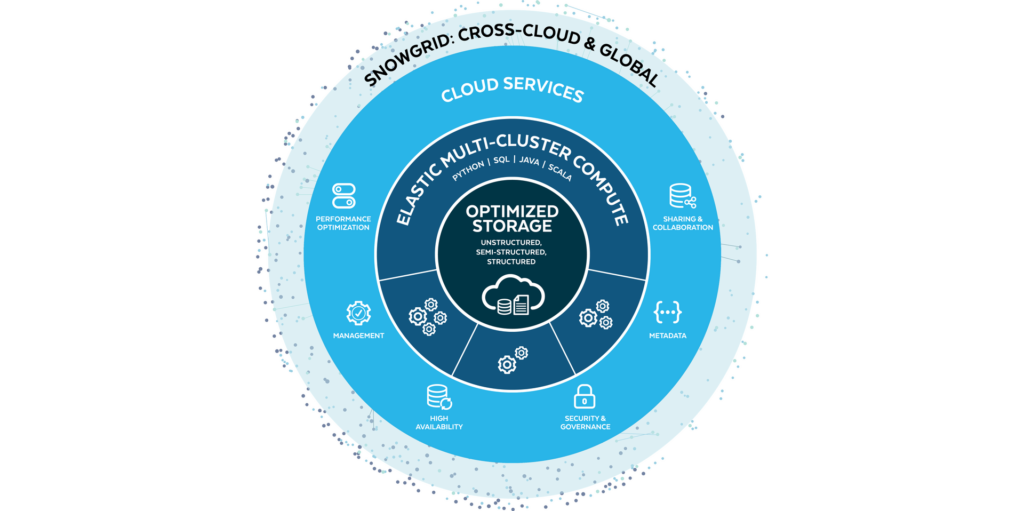
Breaking down data silos means removing the invisible barriers that prevent data from being fully exploited and monetized. Data is simply information, but a valuable one used to represent the complex reality we live in. The possibility for a company to integrate and share data translates into a more accurate and comprehensive representation of the operational reality. Consequently, higher insight quality is achievable. With the Snowgrid technology, Snowflake makes it possible to bring data sharing and collaboration to the next level.
Data silos
Data silo refers to a higly isolated monolithic block of data stored somewhere and hardly accessible by other parts of the organization. Much like a farm silo is closed from the outside world to contain and protect wheat. Remarkably, they represent one of the main reasons why many companies struggle to leverage data. Indeed, according to a study conducted by Forrester Consulting in 2020, the “82% of enterprises are inhibited by data silos”.
How data silos originate?
Data silos do not have a single origin, and without a well-understood data governance, they can naturally arise.
Technologies. The high availability of technological instruments is an attractive reality. However, often there is scarce integration between different tools. This translates in economic and time-consuming processes when data needs to be reconciled.
Organizational structure. Companies generally have a defined organizational structure with different departments focusing on specific areas. Often, these departments operate with scarce interaction among them, using their own toolset and systems. As a consequence, data remaines confined within different business units limiting interaction and collaboration.
Business growth. A long-lived company or a fast-growing one often ends up with multiple incompatible technologies and systems. In addition, new business needs may arise leading to new departments and units, and thus, a change in the organizational structure.
Why are data silos a problem?
The presence of data silos within an organization reflects a scattered distribution of data, which is a symptom of the absence of a unique source of truth. This leads to possible data inconsistency, duplicates, and incompleteness.
Therefore, users may not have access to all the relevant data present within the company, reducing the quality of business decisions. In addition, conflictual data is harder to identify, leading to poor data quality, which affects all the processes based on available information. Finally, data silos greatly affect the ability to collaborate between users and teams, bringing about a siloed mentality.
Embracing collaboration with Snowflake
Snowflake is a fully-managed cloud data platform that provides a scalable and flexible SaaS solution for storing, processing and analyzing large volumes of data.
Thanks to its architecture, Snowflake enables the creation of a single source of truth. Every entity within an organization can have seamless and secure access to the same data. This allows breaking down data silos and embracing collaboration, accelerating the decision-making process.
Snowgrid
Snowgrid is the Snowflake layer that guarantees connection across regions and clouds.

With Snowgrid, there is no more need to move data across different environments and systems. Access to data becomes faster and more secure thanks to Snowflake’s cross-cloud data governance, which streamlines the definition of access policies.
Snowflake Marketplace
If Snowgrid interconnects your business’ ecosystems, Snowflake Marketplace makes it possible to bring collaboration to the next level by easily and safely connecting with more than 530 external providers, featuring:
Data Sharing. Users can share datasets and applications with other organizations in the Snowflake community, directly monetizing their data.
Third-Party Data. Users can access ready-to-use datasets provided by third-party vendors, simplifying the integration of external data and increasing business possibilities.
Data Applications. Users can find and deploy Snowflake Native Apps, which can be used to satisfy several business requirements, such as automating processing and performing analytics.
Conclusion
Data silos represent a reality that many companies need to face to fully exploit data potential and monetization. Snowflake enables breaking down data silos by providing a fully-managed and comprehensive cloud solution. This allows us to connect the business ecosystem of an entire organisation and securely exchange data with external partners, making Snowflake one of the most appealing solutions in the market.





